Zucchinis are a great addition to your garden. But have you ever thought of adding some companions to it? There are plenty of companions to add to Zucchinis. But it is essential to learn the best and worst companions, as not all plants can be added as companions.
Best Zucchini companions are Beans, Peas, Corn, Nasturtium, Marigold, Dill, Oregano, Borage, Lemon Balm, Tomatoes, and many more. Zucchinis, with these companions, will complement each other. On the contrary, you should avoid Potatoes, Fennel, Eggplant, other cucurbits, and other squashes.
Companion planting not only increases the appearance of your garden but also helps Zucchinis from various ailments like pests or nutrient deficiencies. Read this Zucchini companion plant guide till the end to learn more about it.
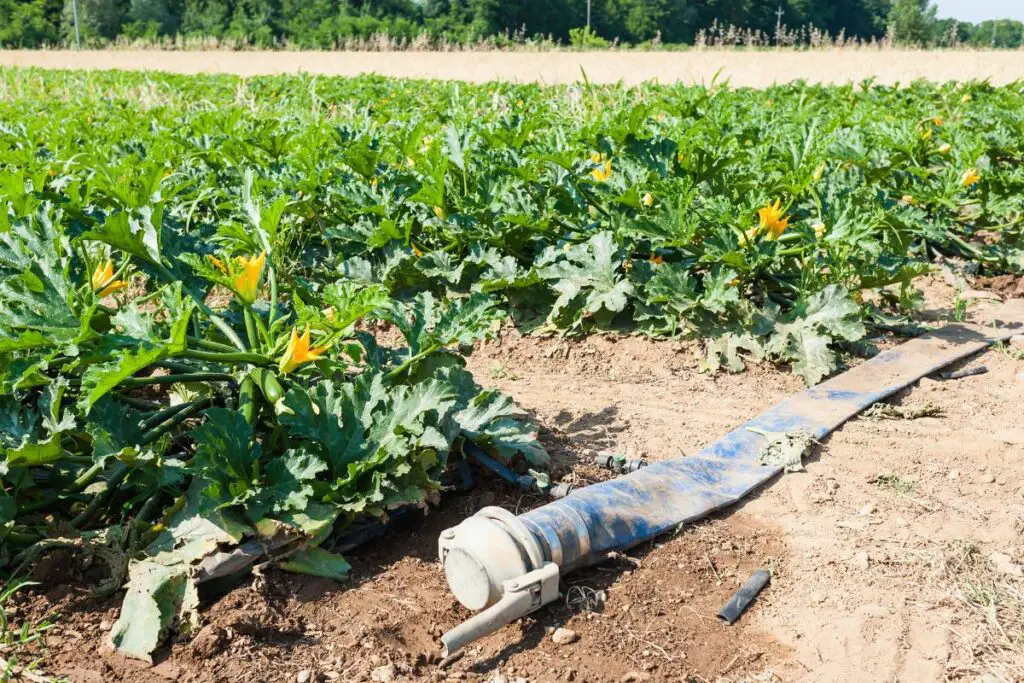
Understanding Companion Planting
Companion planting is a revolutionary gardening method that protects the Zucchinis. It is crucial for the organic variety.
The concept involves planting Zucchini with other crops that are a good fit for it and will complement each other.
Planting different crops near each other will help deter pests, attract beneficial insects, and stimulate plant growth.
Zucchini companions will either help the Zucchini to grow better or the companion will grow better beside the Zucchini.
Selecting the proper companions will result in higher yields, increased plant health, low pests, and reduced use of pesticides.
At the same time, planting misfit companions that won’t complement each other can lead to stunted growth due to the requirement of the same resources and fighting for them.
These types of plants are called poor companion plants.
Benefits of Companion Planting with Zucchini
Companion planting is becoming popular as it has lots of advantages.
You will receive drawbacks if you are planting poor companions.
But with the right companion, you will witness many benefits, both in the Zucchinis and the companions.
Let’s look at some apparent benefits of companion planting:
Prevents weed growth
Let’s say you have planted the Zucchinis in rows, and each row will have a lot of space.
When those spaces stay empty for too long, weeds start growing.
Over time, Zucchinis and weeds will fight for the same resources to survive, leading to stunted growth.
You can suppress weed growth and increase your produce per square yard with companion planting.
Crop variety
When you have a tiny space in your garden or a monoculture, you will have a small amount of crops to grow.
If you grow more than one crop, you will have a broader variety in the same land.
You can use it as an advantage and grow more fresh vegetables.
The significant advantage of doing this is commercial.
Along with getting more vegetables from the small piece of land, you will have safe crops that you won’t have to buy from the market at high prices.
When the main crop fails, you will still have a backup.
Improves soil fertility
Combining the crops encourages the creation of synergy.
With this, one crop can provide nutrients to the other crops growing as companions and vice versa.
For example, you are growing legumes with Zucchini.
At a time, Zucchini will need a lot of nitrogen; if you do not provide enough, the vines and leaves won’t develop properly.
Legumes can release a lot of nitrogen into the soil.
So, when Zucchini grows beside them, the plant will receive lots of nitrogen without any deficiencies.
Improves flavor
Companion planting is also known to improve the flavor of other crops.
Some wines will have a pear or cherry flavor, some will have an extra virgin oil taste, and some will have an artichoke garlic taste.
Companions like cherries or artichokes can give their flavor to their neighbors.
When you grow grape vines with some pears, cherries, or artichokes, the wine you get from the grapes will have the flavor of other crops.
Some plants receive the flavor, whereas others give up the flavor.
Controls pests
Some plants can deter pests and keep these unwanted guests from reaching your Zucchini and damaging it.
Plants like Dill, Marigold, Garlic, and Nasturtiums can keep many insects at bay.
As a result, your Zucchini will rarely get affected by any pests.
Attracts beneficial insects
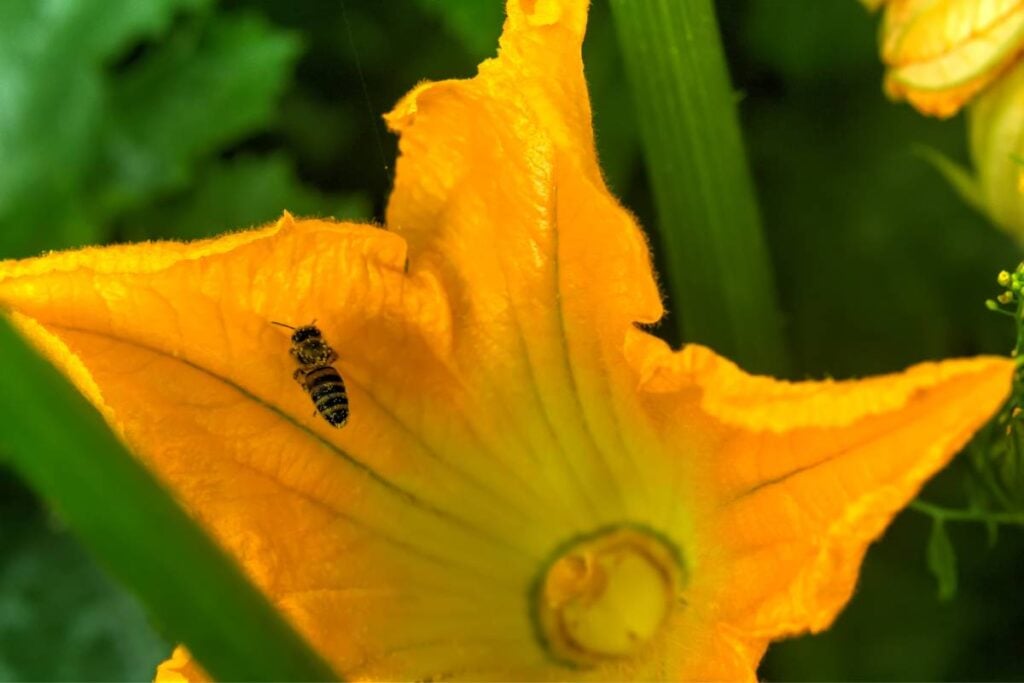
Besides controlling destructive pests, companion plants can also invite beneficial insects into your garden.
Since Zucchini is produced by pollination, you will need some external agents to pollinate.
Insects like bees, butterflies, and squash bees are major in pollination.
You can grow companions like marigolds, sunflowers, or nasturtiums to attract these insects in your garden.
The more pollinators visit your garden, the higher the chances of Zucchini yields.
Protects the soil as ground cover
Groundcover is now the best method to store moisture and nutrients in the soil.
Bare soil is open to erosion because natural resources like sunlight, rain, and wind can dry the soil, drain its nutrients, and make it infertile or nutrient-loving plants.
So, when you grow companions between the main crops, you can protect the soil.
Best Companion Plants for Zucchini
When it comes to companion planting, Zucchini is more complicated than the other crops.
The shape and size of the plant give you reasonable limitations.
Moreover, the Zucchini plants are demanding regarding sunlight, water, and nutrients.
I have been growing Zucchinis for a long time.
I grow some other companions, too, like Sunflowers, Marigolds, Corn, Beans, and some herbs like Dill and Lavender.
While researching the suitable companions for Zucchinis, I have encountered many good companions.
Besides that, I also learned about what not to plant.
Based on the resource factors and my research, I am sharing some friendly companions for Zucchinis.
Looking for gardening supplies? We have tested 100's of products before recommending them to you guys. Check out our best pick below:
| Image | Gardening Supplies | Best Price? |
|---|---|---|
 Top
Top Top
Top | Raised Garden Bed Kit | Check On Amazon |
 | XLUX Soil Moisture Meter, Plant Water Monitor, Soil Hygrometer Sensor for Gardening, Farming, Indoor and Outdoor Plants, No Batteries Required | No Results |
 Top
Top Top
Top | 82 Pcs Garden Tools Set and Extra Succulent Tools Set | Check On Amazon |
 | Joeys Garden Expandable Garden Hose with 8 Function Hose Nozzle, Lightweight Anti-Kink Flexible Garden Hoses, Extra Strength Fabric with Double Latex Core, (50 FT, Black) | No Results |
 Top
Top Top
Top | Dual Chamber Compost Tumbler | Check On Amazon |
 Top
Top Top
Top | Sunnyglade Plant Stakes | Check On Amazon |
 Top
Top Top
Top | Organic Cold Pressed Neem Seed Oil | Check On Amazon |
 Top
Top Top
Top | Mighty Mint Gallon :-Insect and Pest Control Peppermint Oil | Check On Amazon |
 Top
Top Top
Top | Scotts DiseaseEx Lawn Fungicide | Check On Amazon |
 Top
Top Top
Top | Jacks Classic 20-20-20 All Purpose Fertilizer | Check On Amazon |
 Top
Top Top
Top | 30,000 Seeds Pollinator Attracting Wildflower Mixture | Check On Amazon |
 Top
Top Top
Top | Survival Vegetable Seeds Garden Kit-Over 16,000 Seeds | Check On Amazon |
The Three Sisters: Corn, Beans, and Squash
Have you ever heard of THE THREE SISTERS?
The classic Three Sisters of Mexico and Latin America is Corn, Beans, and Squash planted in a symbolic food forest.
The combination was invented in ancient times by the people of Central America and described as GIFTS FROM THE GODS.
That is why people believe they should be planted and eaten together.
These three plants provide several benefits to each other, both biochemically and physically:
- The Zucchini plants will act as a ground cover to suppress the weed growth and moisten the soil.
- The Beans from the legume category will fix the soil by adding nitrogen and boosting the growth of Corn and Zucchini.
- Corn will act as a trellis for the Beans and Zucchini vines to vine up while using the empty spaces between the Zucchini rows.
Despite loving the same soil and water needs as Zucchini, these plants will never compete for any resources.
Their tall growth habit will complement the Zucchini’s low, bushy shape.
Plant the tall plants at the back of your Zucchini plants so that each receives equal amounts of sunlight.
Garlic
Garlic is a perfect companion for the Zucchini plants. They can greatly complement each other:
- Since Garlic is small, it is not bothered by the big Zucchini leaves. Garlic needs indirect sunlight and quickly adapts to the watering needs of the Zucchini.
- Garlic will benefit Zucchini by keeping the pests like slugs and snails away from the Zucchini plants. These can feed on the leaves and flowers and damage the fruit.
- Garlic is a natural disinfectant. Zucchini gets mold under the fresh, broad, and shady leaves, and Garlic can prevent fungi.
Peas
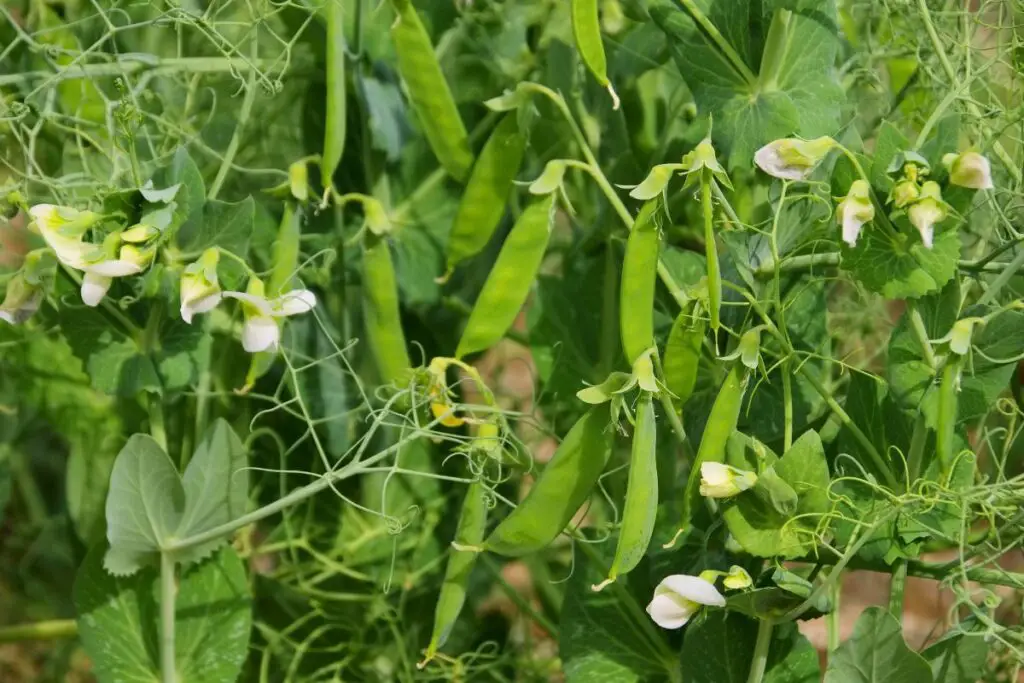
Peas would be an excellent addition to the garden as they will help grow and develop the Zucchini plant.
Peas belong to the legume category; these plants release lots of nitrogen into the soil.
Zucchini will need nitrogen for their vegetative when they germinate and start growing leaves and vines.
Though you will be applying nitrogen fertilizers, these legumes can be helpful for the plants if you ever forget some doses.
The Zucchini will absorb the nitrogen these legumes release into the soil and thrive without issues.
You cannot grow Peas between the Zucchini rows.
You have to grow them at the back of the plant.
These are very tall plants, and keeping them between the Zucchini rows can block the sunlight from reaching the Zucchini.
So, planting them at the back won’t be a problem.
Both will receive equal amounts of sunlight.
Onions
Onions have the same shape as the Garlic and, therefore, become a great companion for the Zucchini plants:
- Onions also keep snails and slugs away with their pungent smell.
- They also act as a disinfectant and prevent mold or any other fungi. It is a great plus point for Zucchini, who have long leaves.
- The large leaves of Zucchini sometimes block adequate airflow, leading to mold formation. Onions can prevent it.
- The large onion bulbs can keep the soil loosened for the shallow-rooted Zucchini, further helping aeration.
Tomatoes
Tomatoes are also considered a good companion for the Zucchini plants:
- The giant leaves of the main crop can provide ground cover that can keep the soil cool and moist. Tomatoes will be growing without any issues.
- The yellow flowers from both crops will attract pollinators and increase the yields.
Though both are vine plants, Tomatoes should be staked.
Zucchini can grow over the ground without any problem.
Since both are quite demanding and competitive regarding resources, you must be careful and ensure both receive sufficient requirements without any competition.
Peppers
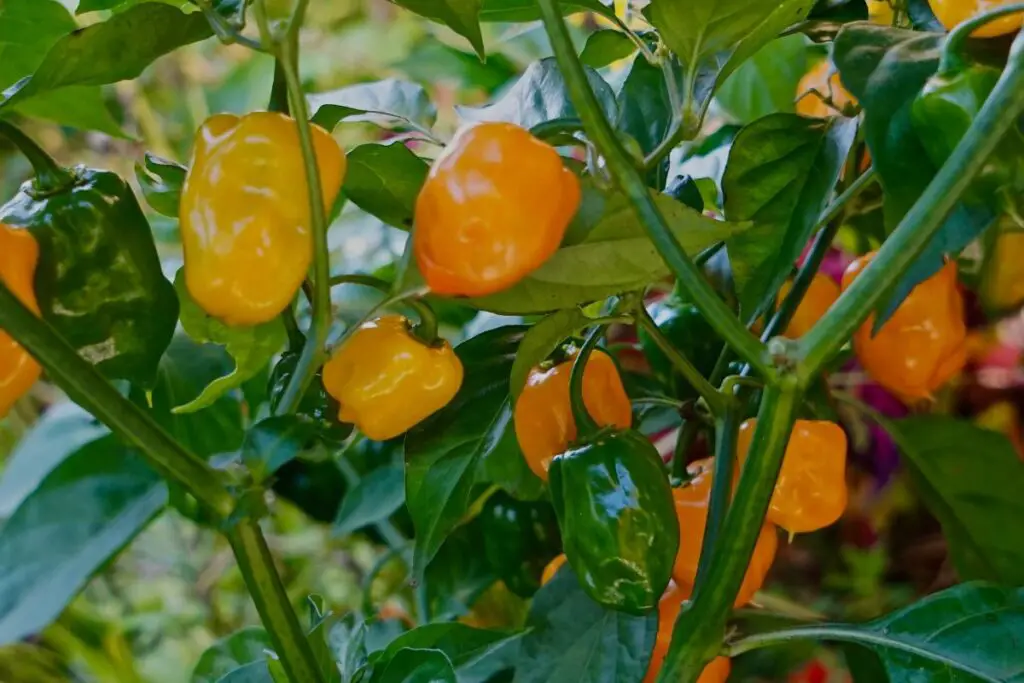
Peppers and Zucchini will complement each other in their growth habits:
- Both hot and sweet peppers can thrive in partial shade. They will make a good companion for the Zucchini plants as their large leaves can protect the peppers from direct sunlight.
- The bushy peppers will also complement the Zucchini growth habit as they are very stout and compact, and Zucchinis are large and bushy.
- Peppers have a long growing season. So, when your Zucchini’s growing season has ended, your garden will still have some peppers to add colors and keep the empty space between the Zucchinis filled.
While planting, leave 18-24 inches of space between Peppers and Zucchini to prevent overcrowding.
Marigold
It is a lovely and widespread flowering plant.
It has an imposing quality: the smell it has can deter most of the bugs.
No bugs can withstand marigold’s smell.
They run away, and thus, your Zucchini will stay bug-free forever.
Once the plants are healthy and away from bugs, their flowers will add vibrant colors to your garden.
Sunflowers
Sunflowers are tall, and their flowers have lots of nectar.
Planting Sunflowers as a companion can attract pollinators and help the Zucchini in pollination.
Sunflowers won’t bother the main crop because the stems of the Sunflowers are thin.
They come in summer with higher heights than the Zucchinis.
Sunflowers have fewer demands.
Since Sunflowers can grow very tall, around 13 feet, instead of planting them close to the Zucchini, scatter them over the bed, ensuring they do not block the sunlight from reaching the Zucchini bed.
Zucchinis with Sunflowers can make your garden look attractive.
Borage
Besides producing lovely blue flowers, Borage has many other qualities which can boost Zucchini growth:
- Borage produces leaves packed with nutrients and medicinal qualities.
- The Borage plants have deep taproots that can accumulate nutrients and water from deep into the soil, making them more available to the nearby crops, Zucchini in this case.
- The plant is large at the bottom, so you can let it stay between the Zucchini rows easily.
- Borage can attract bees and other pollinators, which can further help the Zucchinis in pollination and higher yields.
- The plant can also keep beetles away from the Zucchinis.
Turnips
Turnips and zucchinis can complement each other well:
- Turnips have large roots but won’t bother your main crop.
- The Turnips are thin at the base, which allows the Zucchini to have all the space they want, especially the leaves, as they are huge and have an upward-growing habit.
- Turnips repel pests like aphids and save your Zucchini plants. Aphids love to suck the sap from squash plants, and Zucchinis are no exception.
Nasturtiums
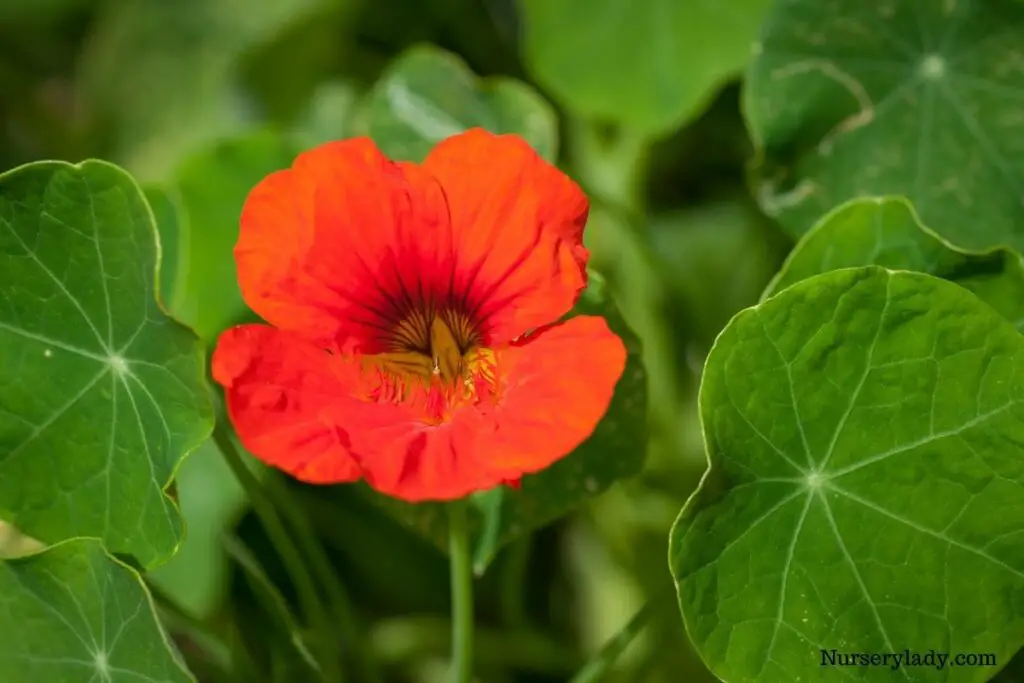
You can scatter these lovely flowering plants among the Zucchini plants.
The best benefits Nasturtiums provide are:
- Their flowers can attract lots of pollinators. As a result, Zucchini flowers can also get pollinated, leading to non-stop yields.
- Nasturtiums can deter bugs like squash bugs and vine borers.
- It can also attract beneficial insects like beetles, who love to feed on aphids and borers. For this, the Zucchini plants will stay safe from these bugs.
Dill
Dill is a very low-maintenance herb plant. But it can go unruly if you do not maintain it properly.
- Dill plants make great companions for Zucchini plants:
- Young Dill plants can improve the vigor and growth of the Zucchini seedlings when planted as companions:
- This herb plant’s giant umbel flowers attract a vast diversity of ladybugs, parasitic wasps, and hoverflies that love to feed on bugs like aphids, thrips, and cucumber beetles.
Lemon Balm
The plant looks like Mint.
The Lemon Balm plant contains lots of nutritional and medicinal value.
Lemon Balm can deter pests and keep your Zucchinis bug-free.
Since Lemon Balm grows tall and straight enough, try to plant them at the back, not in between the Zucchini rows.
Oregano
Zucchini and oregano are a great combination in gardening:
- Oregano deters pests and insects. Their peppery aroma can repel beetles, squash bugs, and aphids at bay.
- The Purple flowers can attract pollinators.
- Oregano enjoys lots of sunlight. Growing them between the Zucchinis can block the sunlight from reaching the Oregano plants because of the main crop’s large leaves.
Grow the Oregano plants around the Zucchinis, 16-18 inches apart from the Zucchinis.
Oregano plants are thin with a standing habit. Planting them between the Zucchinis can be challenging to find within the bed.
The best place would be at the edges of the Zucchini beds.
Mint
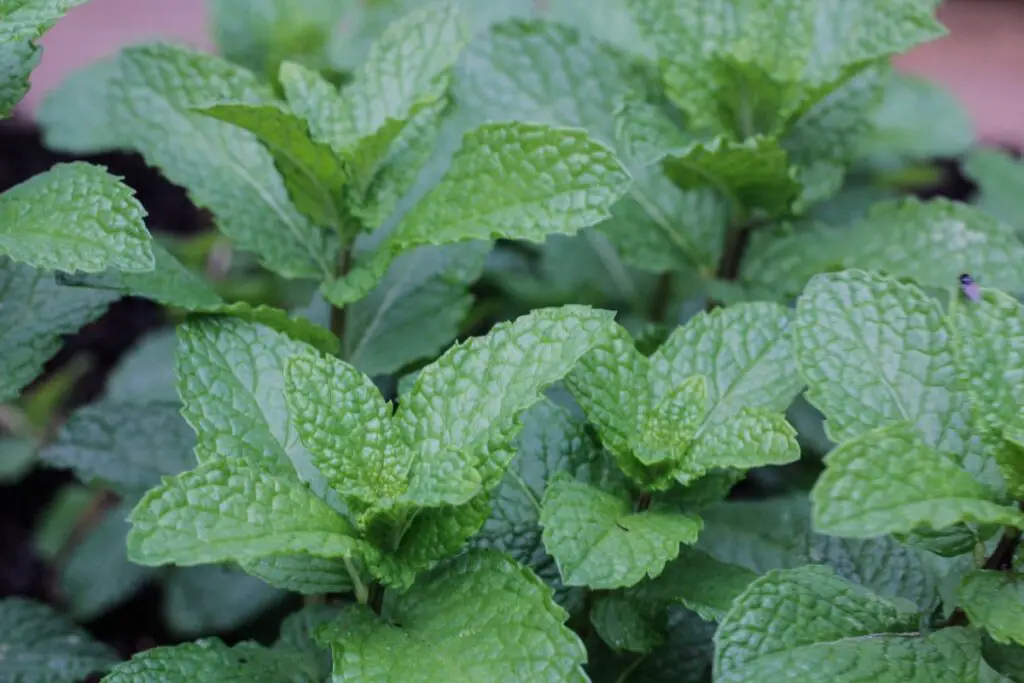
A great herb companion for Zucchini plants can be Mint plants:
- Mint can grow even in the dark places and thus won’t be bothered by the Zucchini’s large leaves. It can grow seamlessly between the Zucchini rows or any other summer squash.
- Mint is also a low-maintenance plant. Once it gets established, it will never give you any trouble.
- Mint can also keep pests away. So, Zucchinis will stay fine beside Mint plants.
Rosemary
Rosemary’s distinctive flavor and resinous leaves can deter all kinds of bugs, including squash bugs, cucumber beetles, aphids, and vine borers.
Rosemary plants can grow very tall and wide.
So, keep them on the perennial margins, away from the annual beds, and within a few yards of the Zucchini plants.
Lavender
Lavender’s sweet aroma and beauty complement Zucchini when planted together:
- Along with this beauty, Lavender’s strong fragrance can keep several pests and insects away from the plant.
- Lavender’s lovely flowers can attract pollinators like bees and butterflies to help in pollination. Zucchini will benefit mainly from this.
Being Mediterranean natives, you can grow them along with Rosemary in the same soil beds along the borders of the Zucchini beds.
Keep the Lavenders a few yards from the Zucchini plants.
Other companions
Besides these companions, there are a few more plants to grow as companions, for example:
- Calendula: Traps pests and attracts pollinators
- Parsley: Deters pests and damaging insects
- Sweet Asylum: Keeps pests under control by attracting predatory insects like ladybugs and parasitic wasps to feed on the pests.
- Chives: Repels deer and aphids
- Radishes: Deters squash vine borers
- Sage: Its strong scent will keep bugs away.
- Thyme: Its antimicrobial and antifungal properties and scent will keep the soil-borne pathogens and unwanted pests at bay.
- Marjoram: Attracts bees and hoverflies and builds helpful chemicals in the soil.
- Chamomile: Builds helpful chemicals in the soil.
Worst Companion Plants for Zucchini
Certain plants will compete for resources and space with Zucchini, hindering each other’s growth.
These types of plants are called poor or worst companions for the Zucchinis.
The plants that belong to this group are:
Summer squashes and other cucurbits like cucumber and pumpkin
These share the same resources as Zucchini, and planting them as companions can lead to resource competition and stunted growth.
Also, there are chances of cross-pollination among the summer squash members, which is not appreciated by many.
So, do not plant them as companions.
Sweet potatoes
The vining habits of sweet potatoes can conflict with Zucchini’s vining growth.
As a result, both will fight for space and overgrow, and lead to a lack of airflow and powdery mildew.
Potatoes
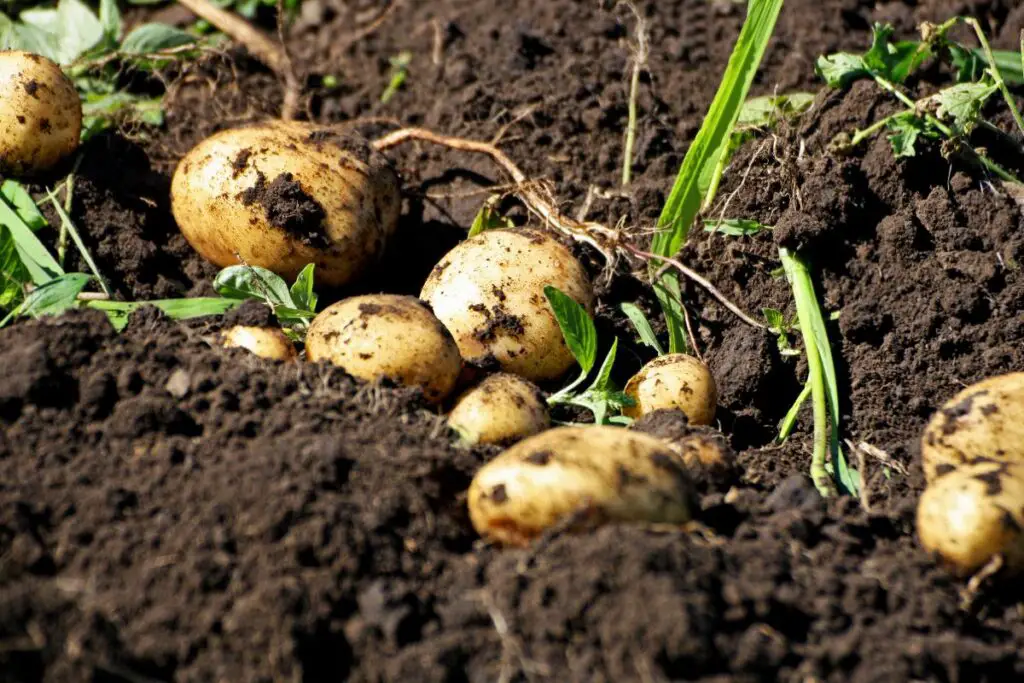
Potatoes are also very demanding regarding nutrients and space.
When planted with the Zucchini plants, both will fight for nutrients and space.
One of them will become weak and suffer from nutrient deficiency.
Zucchini’s large leaves can overshadow the Potato plant, which the latter won’t enjoy.
Moreover, Potatoes are prone to potato blight and powdery mildew.
Once they catch the disease, it can also spread to the Zucchini plants.
Fennel
Though Fennels can attract beneficial insects, planting them with Zucchini can hinder the growth of the neighboring plants.
Eggplant
Though Eggplant will match perfectly in the dish with Zucchini, you should not plant them as companions.
Both are very heavy feeders and will fight for nutrients, leading to stunted growth and nutrient deficiency.
Additionally, Eggplants can get overshadowed by the Zucchini’s large leaves, which the former won’t enjoy.
Brassica members
Kale, broccoli, Brussels, cauliflower, kohlrabi, and sprouts from the Brassica members should be avoided as Zucchini companions.
These can absorb a lot of soil nutrients.
As a result, when planted near the Zucchinis, they will rob all the nutrients from the Zucchinis after consuming the nutrients you provide through fertilizers.
Moreover, Brassica members are known to attract pests.
Planting Strategies and Layout
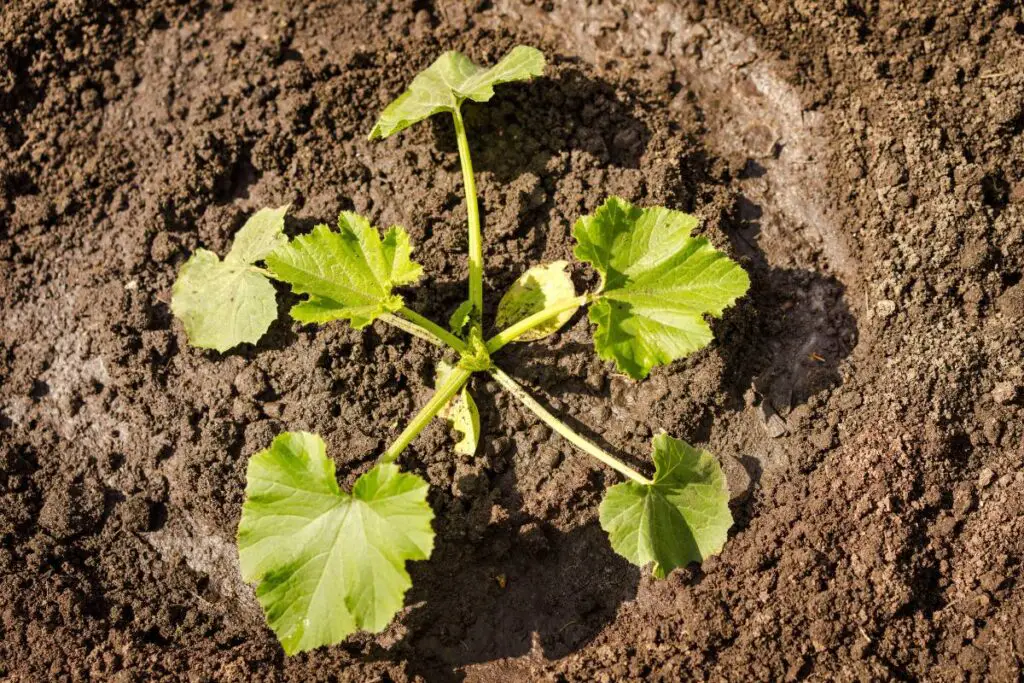
You need to strategize the planting and make a layout during companion planting.
The size and shape of the companion plant is crucial.
The companions should have a shape that fits the gaps between your main crop, i.e., Zucchini.
The companion’s size should not overwhelm Zucchini plants.
While growing Zucchinis in rows, maintain a 2-3 feet distance between each plant.
The rows can be as long as you want, based on the space of your garden and the number of seeds you have sown.
The distance between the rows should be 3-4 feet apart.
For the compact varieties, it should be 1.5 to 2 feet, and for the larger varieties, it should be 2 to 3 feet apart.
You can keep more space in between if you plan to add companions in between in the future.
Small or short-height crops will be fine between the rows.
If the companion is taller than Zucchinis, like Beans, Corn, Sunflower, and Peas, it can block the sunlight.
In that case, you have to plant these at the back of the main crop rather than in between.
In this way, you should strategize and plan the layout of your garden and companion plant.
Managing Competition and Space
When you grow a companion with Zucchini, you must ensure that both the plants do not compete for the same resources and space.
Each plant requires a specific mix of nutrients, but general groups exist.
Both will require enough space to grow and spread.
To manage both the plants’ competition for nutrients, you can use crops that follow each other in crop rotation.
The leafy green vegetables go well with the root vegetables.
Additionally, you must provide sufficient nutrients so both plants can receive their own amount properly without fighting.
Maintain at least 18 to 24 inches of space between the Zucchini and the companions, especially if you are growing any spreading plant like the Zucchini.
It will allow both the plants to receive enough space for growing and equal amounts of sunlight, provided the companion, too, loves the sun.
Potential Conflicts and Challenges
Despite taking care of other things, especially fighting for the same nutrients, you will still face some other issues:
- Overcrowding is a common challenge to face during companion planting. If both the companions have a spreading habit, there will be a problem. But you can manage it by increasing the distance between the main crop and the companion.
- The companions’ watering needs might differ. It makes planting on the same soil bed difficult. However, a good thing is that most plants will require watering only when the top few inches have dried. You can manage this by checking the moisture level with your finger and then watering the plant only when the top few inches have completely dried.
- The soil pH level is another thing to consider, as different plants need soil with different pH levels. You can grow companions with the same pH level as Zucchini to manage this. If not the same, nearly close would work.
- Allelopathy is something that most gardeners ignore. Diallyl disulfide, or DADs, is a critical allelopathic chemical, and any plant releasing these chemicals can inhibit the growth and development of nearby plants. If any Zucchini companions have it, it is better to maintain proper distance between them.
- Incompatible growth stages occur when one plant’s growth stage does not fit the main crop. For example, when the companion is tall, it can shade the Zucchini plants. In that case, you should plan the layout of planting and plant such plants at the back of the main crop.
These are some challenges and conflicts you will face.
Fortunately, you can manage them and continue companion planting without any problem.
Final thoughts
Zucchini is one of the most famous summer squash and a choice for most beginners. Having one vegetable plant is boring. So, you can add other plants as companions to make your garden more enjoyable. But adding any kind of plant as a companion won’t work. Choose a plant so that the main crop and the companion can complement each other and grow without issues. While growing Zucchinis, you can face many issues, like nutrient deficiency and pests.
Keeping these problems at bay will provide you with pounds of Zucchini throughout summer. These companions will aid in this job as they can repel pests, attract beneficial pollinators, and boost plant growth. As you can see, there are several plants to grow as a Zucchini companion. At the same time, you also have some poor companions that you should avoid. I hope the list I have shared can help you find the ideal companion for Zucchini.
Choose wisely to get rewarded with lovely production. Remember that Zucchini can be very competitive and demanding. While adding companions, provide enough space and adequate nutrients to the plant. Make proper planning and layout about where to plant the companions around the Zucchini so that both receive enough sunlight.
How do I avoid overcrowding while adding companions for Zucchini?
Maintain a distance more than you usually preserve, provided you are growing an overcrowding variety. At least 18 to 24 inches of distance should be fine.
How will I understand if the Zucchini and the companions are not getting along?
You will see stunted growth, yellowing, and infestation. You might have to separate the two plants and avoid growing them close to each other. Since this can be a hectic job, learn about companion planting, find the right one, and plant it properly to avoid conflict.
Reference: Zucchini Wikipedia
